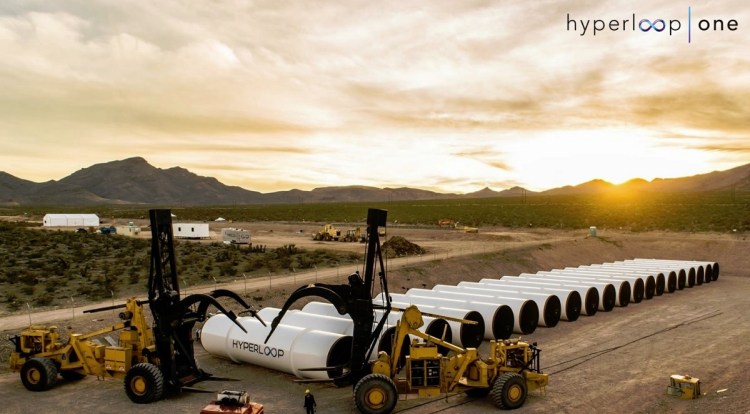I live in the St. Louis area, so I’ve driven the flat stretch of Interstate 70 between St. Louis and Kansas City on several occasions. Along the way, there is a store called Ozark Land, where you can buy fireworks, ninja stars, retro candy, and a pocket knife with your name carved into it, which means my family and I stop there every time we make the 250-mile trip.
More than just the wonders of Ozark Land can be found along that stretch of I-70. There is also the University of Missouri, some of the nation’s most productive farmland, and — if the Missouri Hyperloop Coalition succeeds — potentially the world’s first Hyperloop route.
Originally championed by Elon Musk, the Hyperloop is a form of high-speed transportation that’s sort of like putting yourself in one of those tubes at the drive-thru window of your bank and then being hurtled several hundred miles an hour toward your destination. Theoretically, the Hyperloop would shorten what is currently a several-hour drive — minus time spent buying fireworks and ninja stars at Ozark Land — into a 30-minute commute.
As St. Louis and Kansas City are only the 20th- and 30th-largest metropolitan areas in the country, respectively, this may not seem like the obvious first place to build a Hyperloop route. A Hyperloop between Silicon Valley and Los Angeles or New York and Boston would certainly have the potential to move more people.
June 5th: The AI Audit in NYC
Join us next week in NYC to engage with top executive leaders, delving into strategies for auditing AI models to ensure fairness, optimal performance, and ethical compliance across diverse organizations. Secure your attendance for this exclusive invite-only event.
However, before you could move people on the coasts using a Hyperloop, you would first have to move people out of the way just to build it. That isn’t the case in Missouri. The route connecting Kansas City and St. Louis would run along Interstate 70 through a sparsely populated landscape. The route would also be nearly completely straight and connect two cities with a combined population of roughly 5 million. Kansas City and St. Louis also have two of the fastest-growing startup scenes in the country, and connecting them would help mitigate the lack of density that defines the startup world outside of Silicon Valley.
“Someone, somewhere is going to build a Hyperloop,” said Andrew Smith, vice president of entrepreneurship and innovation at the St. Louis Regional Chamber of Commerce and a member of the Missouri Hyperloop Coalition. “It’s a question of when and where. There is absolutely no reason why the first one can’t be built in Missouri. Building it between these two cities would be more cost-effective. We also have a favorable regulatory environment, and, I believe, the vision to get it done.”
The U.S. clearly has more immediate needs when it comes to infrastructure. However, addressing immediate needs shouldn’t pre-empt innovation. In 1950, fewer than half of homes had central heating and just 75 percent had flushable toilets. No one said we cannot start building a space program until everyone has a heater and a toilet in their home.
Now, too, we can focus on improving the basics and reach for the stars at the same time.
In this case, though, those who want to build a Hyperloop between two of the biggest metropolitan areas in the middle of America aren’t reaching for the stars.
They’re just trying to travel between Kansas City and St. Louis without being tempted by the wonders of Ozark Land.
(Or maybe that’s just me.)
Dustin McKissen is the CEO of McKissen + Company, a marketing and management consultancy located in St. Charles, Missouri.

